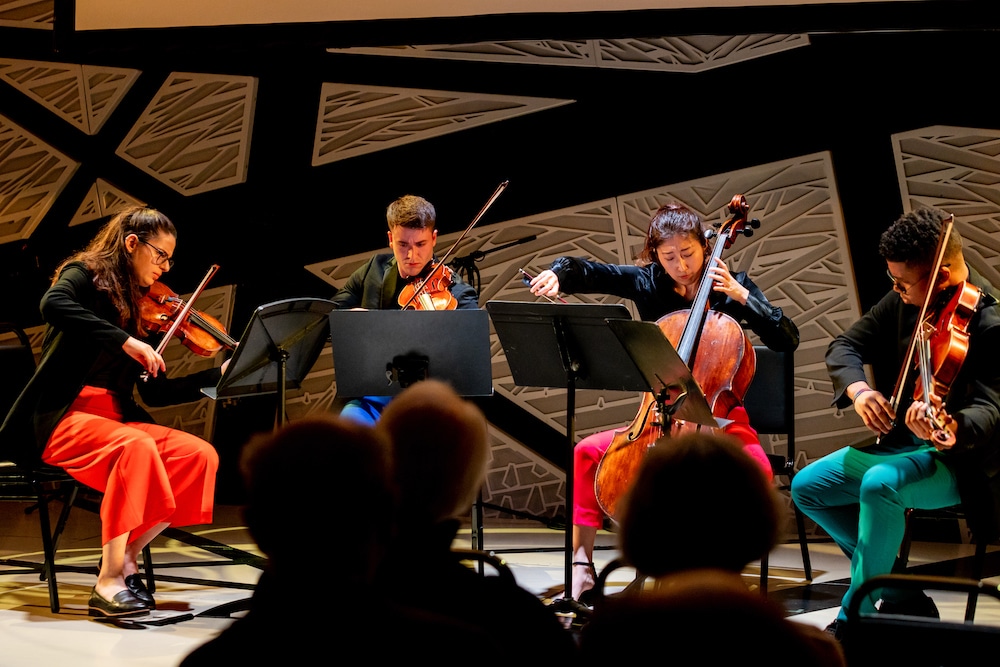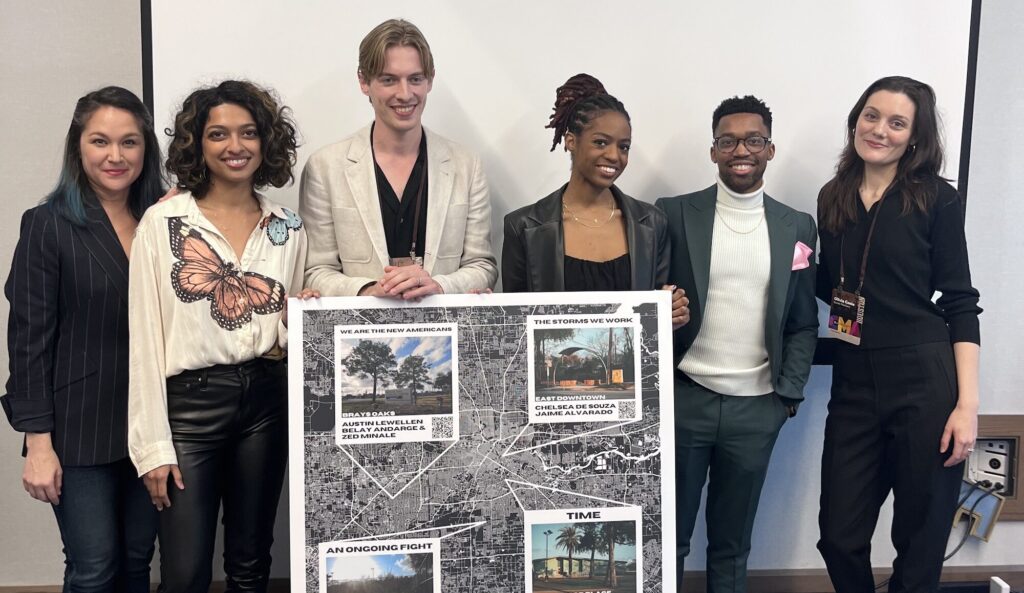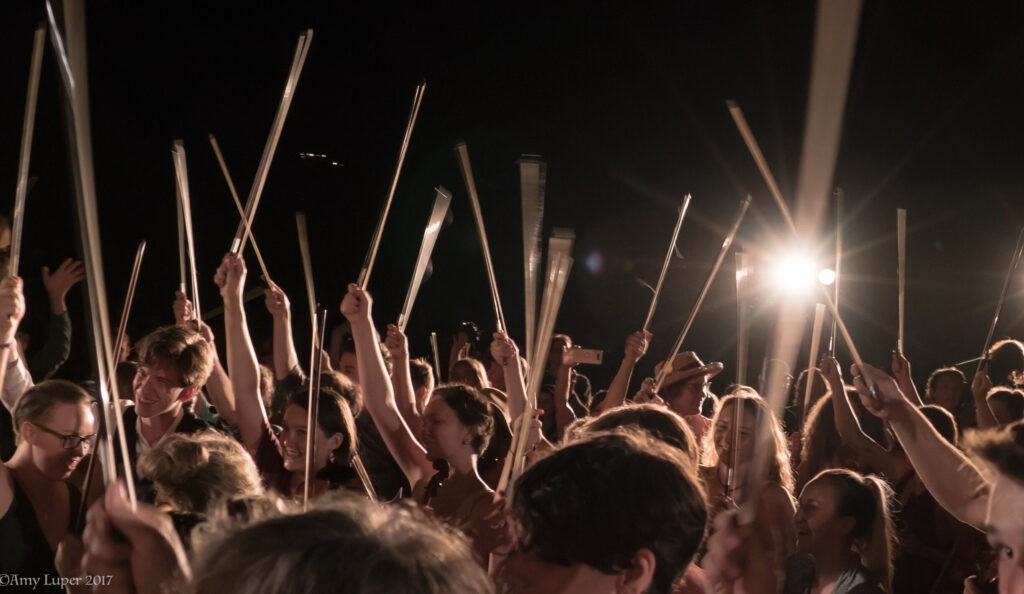In it to Win It
What do chamber music competitions tell us?
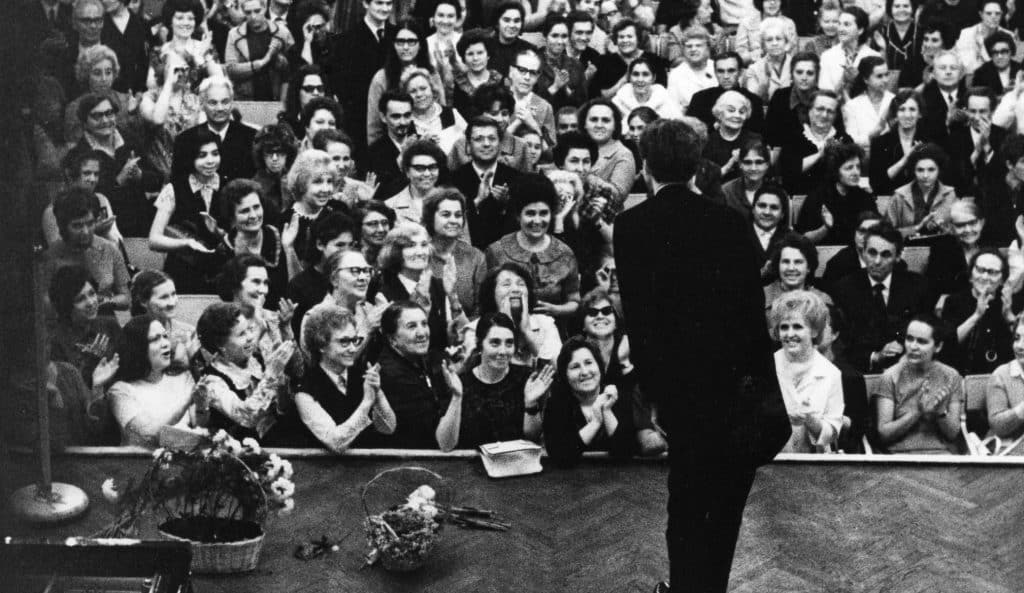
“A career is generally not made by one event. A career is a series of many, many successes, hopefully in short succession.”
At the final round of Concert Artists Guild’s 2023 Elmaleh Competition in May, a harmonica and guitar duo followed their performance by telling an onstage interviewer about their lives as par- ents of a rambunctious toddler. A harpist gave a shout-out to his dog. A string quartet discussed horoscope signs and favorite take-out meals.
As an eleven-member jury looked on from the balcony at Brooklyn’s National Sawdust, competition organizers sought to humanize a practice in music that has often been criticized for its aura of blood-sport entertainment. Bartók famously said that competitions are for horses, not artists, and he may have been on to something: Can a string quartet performance be evaluated like a track and field event? And what is the goal when we try? At a time when there are fewer plum quotes from newspaper reviews to spice up ensemble biographies, competition wins remain dependable résumé credits. The numbers point to the increasing popularity of such events. The World Federation of International Music Competitions lists 120 members on its website, up from 83 in 1990 and 54 in 1980. Twenty of the current members are dedicated to string quartets, piano trios, or general chamber music.
This proliferation of competitions has been driven in part by a sense that they can give emerging ensembles the powerful boost up the career ladder they need. Yet other motives can be ascribed as well, whether to honor a famous namesake or to help elevate a host country’s profile on the global stage. One of the first international contests, the Anton Rubinstein Competition, held in 1890, started partly as an effort to tout Russia’s musical prowess in European circles. In the last decade, China has similarly sought recognition with events such as the Shanghai Isaac Stern International Violin Competition and the China International Music Competition.
Chamber music contests occupy a smaller, and younger, subset of this busy landscape. Most were established in the last half-century, including the Fischoff National Chamber Music Competition, which marked its 50th anniversary in May; the Banff International String Quartet Competition, first held in 1983; Italy’s Premio Paolo Borciani string quartet competition, founded in 1987; and London’s Wigmore Hall International String Quartet Competition, whose roots date to 1979.
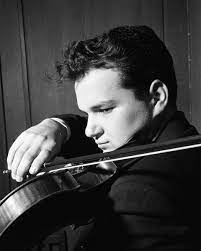 Violinist Jamie Laredo, first prize winner of the Queen Elisabeth Competition, in 1959. Photo: courtesy of the Queen Elisabeth Competition
Violinist Jamie Laredo, first prize winner of the Queen Elisabeth Competition, in 1959. Photo: courtesy of the Queen Elisabeth Competition

Does Consensus Measure Excellence?
Amid this growth have come complaints that competitions favor clinically precise virtuosity at the expense of individuality and risk-taking. “The group that wins, in a way, plays it safe because they appeal to the middle line of the jury. They don’t offend anyone,” says Marya Martin, the flutist and artistic director of the Bridgehampton Chamber Music Festival. “If you feel you want to be extremely creative and on the edge, the time of a competition may not be the exact time to do it. I do think you have to be at least cognizant of the fact that there are eight or ten jury members.”
But Norman Fischer, the director of chamber music at Rice University, believes that individuality can still flourish in these conditions. “When you’re in a competition the idea is: ‘I need to make sure that if I have a 104 degree fever and
I haven’t slept at all for a couple days, it’s going to sound just as good as if I’m fully rested,’” he says. And with chamber music ensembles, each member has to be operating at that precisionist level. “But there’s no way that you can’t see
the individuality of the constituent players as well. So, for example, there may be a string quartet that has a very showman-like first violinist. Or there may be a refreshing, energetic interchange between all four of the members.
I’m going to be looking for groups that I really respond to and that I really want to love.”
At times, jurors will settle disagreements by focusing on objective criteria such as intonation or rhythmic accuracy, says David Geber, director of chamber music at the Manhattan School of Music. “Sometimes it’s a matter of, ‘This group may have been more imaginative, but this note was out of tune, so we’ll go with those who took the safer route,’” he notes. “And often, a jury will really disagree with itself. I love being on a panel when there’s unanimity, or close to it, because then you really know that, in everyone’s heart, that you’ve made the right decision.”
Nicholas Cords, the violist of the string quartet Brooklyn Rider, recalls judging the A.R.D. International Music Competition in Munich and hearing a violist play in an opulent, 19th- century manner. “All of us on the jury were really fascinated by her playing,” he said. “In the end, it didn’t hold up, but I was heartened to see that a really individualistic interpretation could do so well. To me, it comes down to authenticity in the approach. If a group is trying to be provocative in an interpretation, but it’s not coming from that authentic place, that’s pretty easy to sniff out.”
Formed in 2003, Brooklyn Rider is a rare example of a quartet career built entirely outside the competition circuit.
“I don’t think it was an idea that was under really serious consideration,” Cords says about competing. The members were slightly older at the time and committed to a do-it- yourself aesthetic centered on electro-acoustic jam sessions, Armenian folk song arrangements, and collaborations with players of the shakuhachi, a Japanese flute, and kamancheh, a bowed string instrument of Persian origin. Even when playing standard repertoire, he says, the interpretive aim was to strip away layers of interpretive tradition—the very traditions that typically orient a group before a jury.
Still, riskier ensembles can establish pathways to success through competitions. Eighth Blackbird claimed victories at the Fischoff, Concert Artists Guild, and Naumburg chamber music competitions in the late 1990s with a stage presence that suggested an arty rock band. “We were trying to coexist in a world with string quartets and piano trios, so it meant a lot to us,” says Matt Albert, a former violinist in the sextet who now chairs the chamber music department at the University of Michigan. “When we placed first at Fischoff in ’96, that was the thing that spurred us to say, ‘Okay, let’s make this a priority for the next two years. We can actually stay together and do this.’ Without that, we would have all graduated from Oberlin and never played together again.”
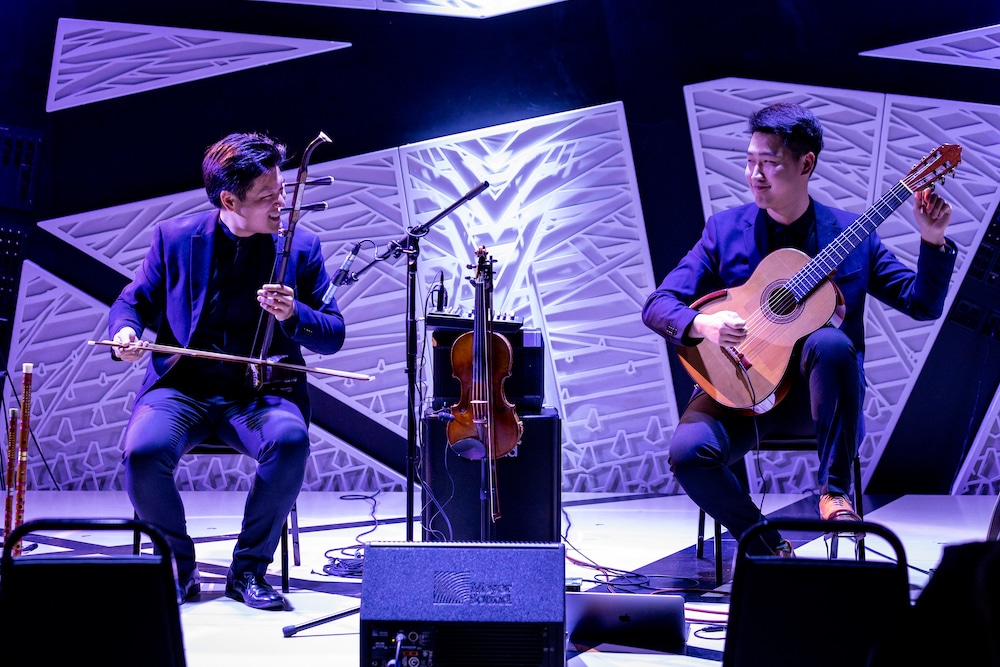
Similarly offbeat was Russian Renaissance, a young balalaika quartet from Moscow, which in 2018 won the short-lived M-Prize Chamber Music Competition at the University of Michigan, edging out several string quartets and taking home $100,000. The group’s bracing takes on jazz, classical, and tango pieces rose above the pack. “There was something about Russian Renaissance that just delighted you out of your mind,” said Fischer, who sat on the jury. “We said, ‘That has to be our grand prize winner.’” (After signing to American management and appearing on many university series, the group reformed during the pandemic as SirinCry, and has yet to return to the U.S.)
Sometimes the audience prizes at competitions are the most compelling gauges of excellence, unburdened as they are by jury consensus-building. “It’s really interesting to see the kinds of things the average public picks up in a performance,” notes Fischer. At the Concert Artists Guild competition in May, the audience prize went not to a string quartet or violin soloist (despite worthy examples of each) but to the ArcoStrum, a violin-guitar duo whose members doubled on traditional Chinese instruments.
The competition field has been dogged over the years by ethics concerns and the lack of transparent voting standards. Prominent competitions such as Banff have taken various steps to forbid jury members from voting for their own students— typically the most glaring concern when it comes to fairness and transparency. But doubts linger: there can be murky balloting procedures, jurors who tactically vote for each other’s students, and questions about the definition of a teacher-student relation- ship. (Does a single master class count? A few lessons at a summer festival?) The emergence of video streaming and even the publishing of jury results has supplied some measure of openness, though the field lacks a single industry watchdog. And perhaps no system can produce a pure, unaffected result. “Most of these competitions that have been going on for a while have a track record,” says Rice University’s Fischer. “But the choosing of a jury is a big deal. You are choosing people not just because they happen to be first violinist of a famous quartet, but because you know the person, their standards, and their tastes.”
Can competitions produce stars?
Violinist Arnold Steinhardt is among those who built their careers in competitions; he won a bronze medal at the 1963 Queen Elisabeth Competition. While he hoped it would be the “second-stage rocket” that would thrust him into a solo career, instead it led him in a more unexpected direction, toward co-founding the Guarneri String Quartet. In recent years he has seemed to sour on the hype machinery around contest winners. “A prize means recognition and publicity,” he wrote in his 2006 memoir, Violin Dreams. “Yet competition winners are seldom assured a glittering concert career as a victory trophy. Indeed, some have accepted their prize and disappeared into oblivion. For most, competitions serve as one in a series of vaguely defined steps that might lead to concerts, a manager, and a name.”
Steinhardt’s varied career in chamber music and academia resonates with Chris Williams, the former executive vice president of Concert Artists Guild (C.A.G.) and now president and C.E.O. of the American Pianists Association. “This is show business,” he says, “and not everyone gets to be a star. Not everybody has a major solo touring career, but they are quite successful in the background in ways that people may not totally understand. Maybe they have a fabulous teaching job and they’re getting to do all sorts of performing around that institution. Unfortunately, the standard optic is: ‘I don’t see you playing with every major orchestra. You didn’t really make it.’ I hope that changes over time.”
In part because C.A.G. effectively doubles as a management and publicity agency for its winners, it has adjusted its guidelines with an eye towards the presenting landscape. Instead of a blind audio pre-selection round, applicants must submit a video, a written statement about their programming philosophy, and if possible, a piece unique to their culture or heritage. “The kind of artist that we are looking for at C.A.G. is someone who is curious about how to make a difference in the world with their music,” says Williams, “and who we think we’ll grow over time on the roster.”
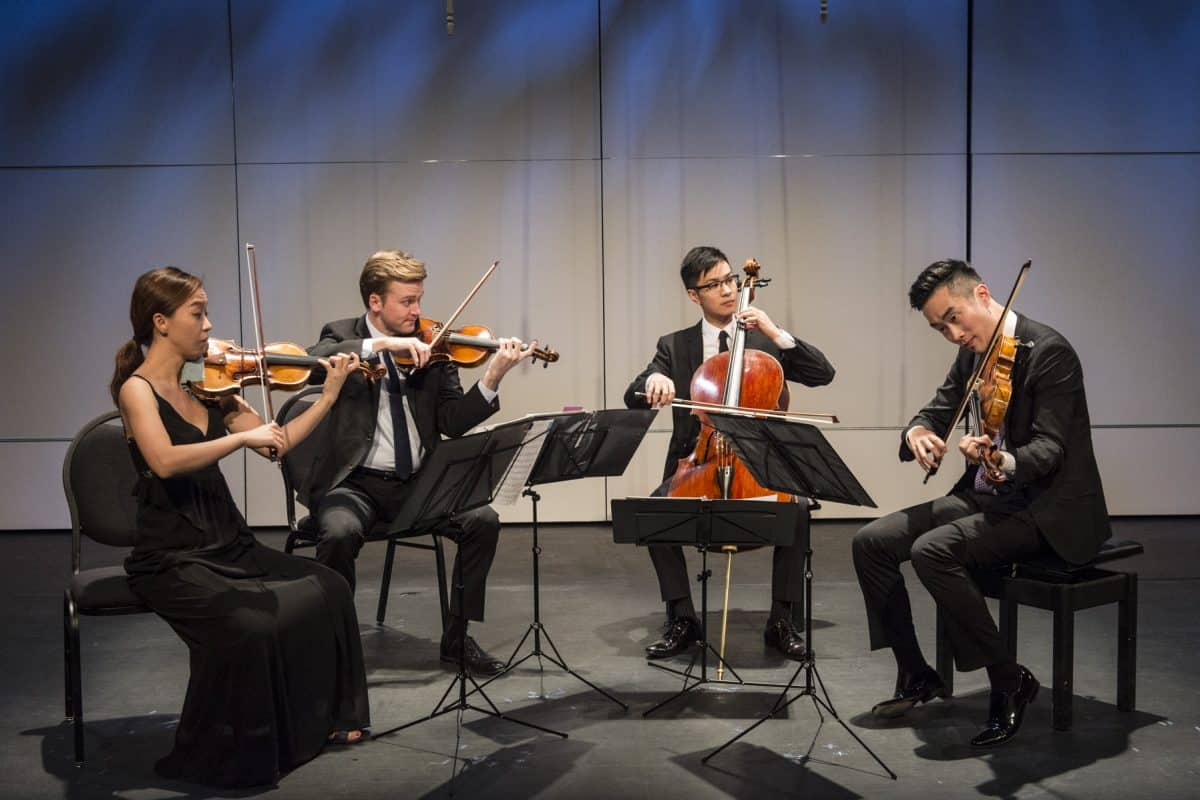
The C.A.G. roster reveals a greater racial and ethnic diversity than even five years ago, a product of some of these efforts. Other competitions have taken some (often modest) steps to promote inclusivity through their application process. The Fischoff competition requires “at least one complete work” by a female, Black, or Latinx composer, and has added a Lift Every Voice Prize to highlight the best performance of a work by a historically under-represented composer. Elsewhere, requirements appear less specific. The Annual Competition for Emerging Professional Ensembles in Yellow Springs calls for a 30-minute audition video “demonstrating the breadth of your ensemble’s repertoire.” A similar audition requirement, albeit via audio, holds for the Chesapeake International Chamber Music Competition. The application repertoire for the Banff competition is squarely focused on standard literature from the 18th through 20th centuries, though director Barry Shiffman says that later rounds allow for diverse choices by the contestants. “Of their own volition, many of those choices were more representative than we’ve seen in the past,” he says, “and a lot more new music and music of all different ethnicities and races appeared, which was wonderful.” Shiffman adds that he sees more diversity among the competitors themselves, which he credits to efforts by groups such as the Sphinx Organization.
As career builders, competitions have limits. Shiffman says that Banff structures its prize packages to provide a long-term push, extending beyond the usual cash awards, engagements, and recordings to include a long-term management deal and a two-year paid residency at Southern Methodist University’s Meadows School of the Arts. The latter component can prepare quartets for teaching and academic residencies. Still, Shiffman urges caution. “Yes, if you win Banff, you win a three-year, half- million-dollar investment in your career,” he says. “That’s really significant. But a career is generally not made by one event. A career is a series of many, many successes, hopefully in short succession.” He points to his own term as second violinist of the St. Lawrence String Quartet: In 1992, the quartet won both first prize in the Banff competition and was a winner of the Young Concert Artists auditions.
Sometimes, competitions don’t provide the key to lasting success. Consider the Rolston String Quartet, which won first prize at the 2016 Banff competition. Despite this and other accolades — including the grand prize at the Chamber Music Yellow Springs competition and the Cleveland Quartet Award from Chamber Music America—the group disbanded last year amid a variety of career pressures, worsened by the pandemic. “The quartet is super rewarding, but as the time goes on, the priorities change and money is the thing you can’t live without,” said Luri Lee, who played first violin in the Rolston. “That’s one of the biggest reasons why people go in and out of chamber music.” Lee, now a member of the Toronto Symphony Orchestra, adds that the Banff win yielded many initial concerts, but the quartet was unable to parlay those into enough re-engagements and a long-term business model. “In the end, audiences and presenters should like you, and that’s how you build a career.”
 Chris Williams
Chris Williams
Do presenters pay attention to competitions?
The extent to which presenters book their series based on com- petition wins varies. Some, including Martin of the Bridgehampton Chamber Music Festival, wait to see how a prize-winning ensemble develops before engaging them for a concert. “If you want to be the Jerusalem [Quartet] or the Danish String Quartet, you have to be working together for years and years to develop that really cohesive sound,” she said. “I certainly follow all the young string quartets after they win, but I also like to give them a little bit more time. They need that to become more cohesive as one player rather than four.”
Cellist Sharon Robinson, who together with her husband Jamie Laredo, is co-artistic director of the Hudson Valley Chamber Music Circle and Cincinnati’s Linton Chamber Music Series, takes a more strike-while-the-iron-is-hot philosophy. The couple recently hired the Isidore String Quartet after the ensemble took first prize at Banff in 2022. The ensemble’s competition credits were touted in the Hudson Valley organization’s website and marketing copy. “If an audience member is new to chamber music and they don’t necessarily have a lot to compare a group to, they put their trust in some of the bigger competition names,” she says.
Some Banff winners are initially booked in North America through what Shiffman calls “agreements in principle,” meaning that a presenter may decline to engage the winner if they choose (an option that has not been exercised). In other cases, winners are guaranteed a spot on a series; some North American and European presenters pre-commit solely based on the Banff brand. Occasionally, a series might take a second- or third-prize winner instead. “We kind of look at the touring as a partnership with all of those presenting organizations,” Shiffman says. “This needs to work for them and this needs to work for us.”
Whether competition winners align with the expectations of presenters is another matter. While some young ensembles are keen to offer programs featuring under-represented composers or theatrical elements, they must also consider the tastes of more conservative communities. “When we’re approaching presenters with our programming, we do so in a way that isn’t going to slap people in the face with something they’re not prepared to hear,” says Devin Moore, the violist of the Isidore String Quartet.
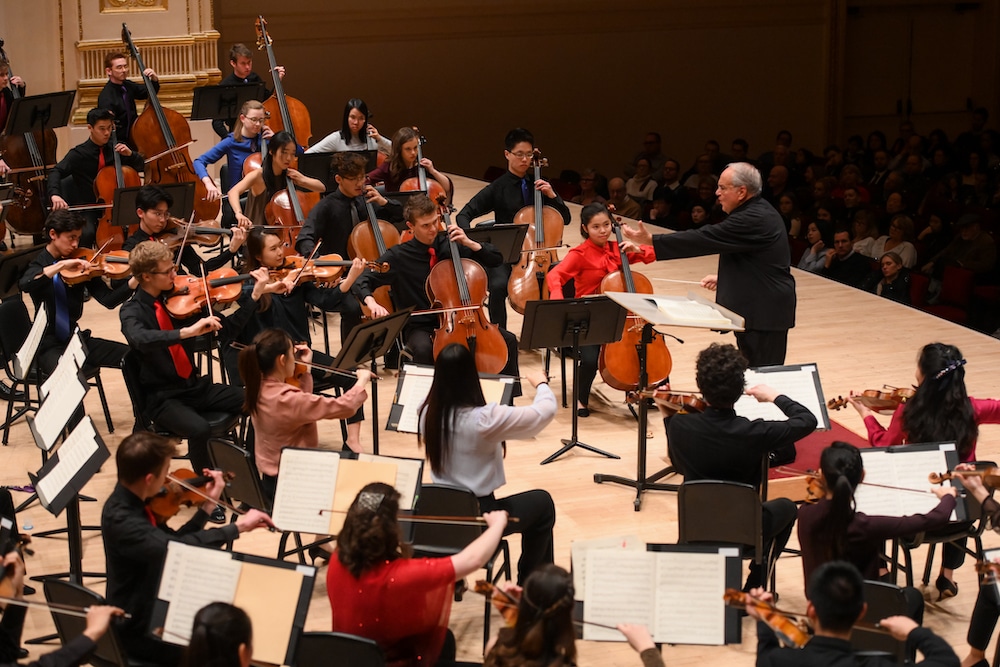
Fischer encourages his own students to compete, if only to see how they stack up. “Groups really want to find out if they are international quality,” he says. “One of the only ways they can do that is to put themselves into the competition to see where they are and what they’re made of.” Sometimes an ensemble runs its course on the competition circuit and disbands soon after. Other times, prizes offer the necessary motivation to soldier on. “The performance opportunities that one gets from a competition are enough of a launching pad that the ensembles could begin to try to make an artistic life. They engage with audiences, presenters, and their market to see what can happen in the beginning of a lifelong career.”
At the Concert Artists Guild competition in May, the Toronto-based Dior Quartet was one group seeking to prove
its mettle before a jury that included prominent administrators (representing Carnegie Hall, Washington Performing Arts, and other organizations) and a notably diverse cadre of musicians, including conductor Kazem Abdullah, pianist Conrad Tao, and violinist Anne Akiko Meyers. The quartet’s members, sporting smart, color-coordinated chinos, spent much of their set gesturing, bounding, and leaping across the National Sawdust stage as demanded by Dinuk Wijeratne’s Disappearance of Lisa Gherardini, a semi-theatrical work about a theft of the Mona Lisa.

“We wanted to be outrageous,” said violinist Noa Sarid in an onstage interview. Whether or not their self-proclaimed outrageousness (or at least, theatricality) will speak to every presenter, the group’s imaginative presentation showed that there is, these days, room to experiment in the finals of an international competition.
